by James Lansdale
After Shigenori NISHIKAICHI attempted to destroy his Zero on NI'IHAU Island the night of 12-13 December 1941, very little remained of the Sakae 12 engine aft of the cylinder bank, the center section of the fuselage, or any of the cockpit instruments.
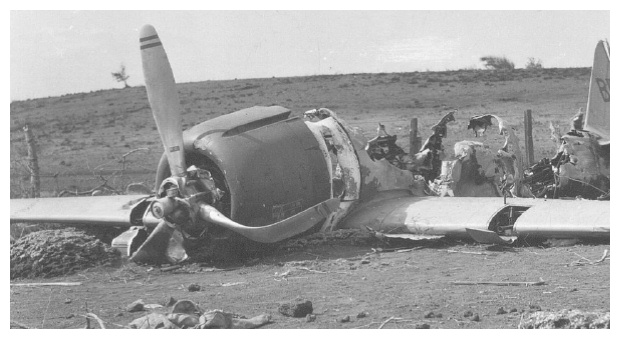
The weapons and some of the parts were salvaged for analysis or souvenired by various military personnel who came to examine the NI'IHAU Zero crash site. Sixty-five years later, only the bare skeleton of the wings, small sections of the forward fuselage, and the Sakae 12 engine air-intake manifold still remained on NI'IHAU. These pieces were donated by Keith ROBINSON, one of the current owners of NI'IHAU, to the Pacific Aviation Museum on Ford Island. The Pacific Aviation Museum has created a realistic display of the crash site as it appeared on NI'IHAU in 2006 using these few remaining airframe artifacts and the manifold.
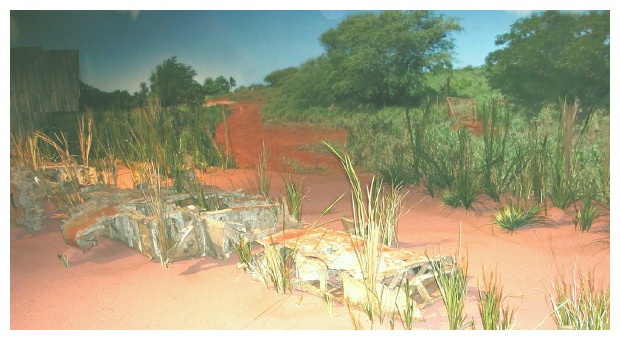
Here below is a view of the Sakae 12 engine air-intake maniford as well as two views of the manifold from the NI'IHAU Zero as seen on display at the Pacific Aviation Museum.

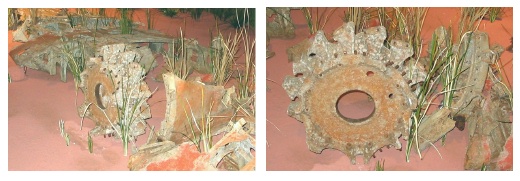
A few of the other engine components were removed or souvenired. In 1981, one of the engine cylinders was donated to the Admiral Nimitz Museum in FREDERICKSBURG, Texas by a donor on KAUA'I. The propeller turned up at HICKAM Field after the war.
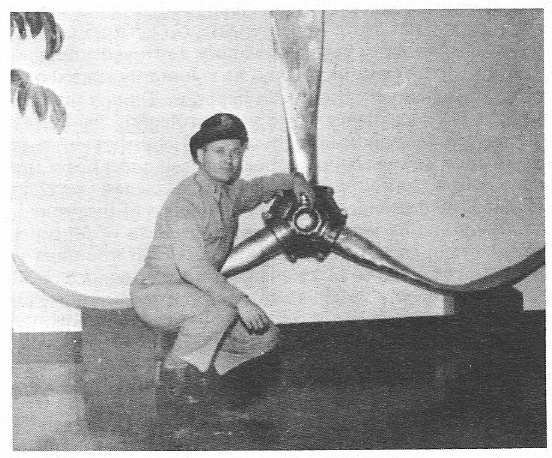
According to a posting on the "Pearl Harbor Attacked Message Board" for April 20, 2001: "The propeller was made into a display at Hickam HQ, later hung on a telephone pole, then stolen by historically interested folk and secreted in areas on the base until they approached the right General. Then it was put behind the bar at Queen Surf at Waikiki with a dedication song [sung by Author Godfrey] 'They Couldn’t Take Niihau No How'. Much later it was moved to the 'hangar. for Quiet Birdmen of Hawaii ...." It was announced last year that it was scheduled to be put on display at the Pacific Aviation Museum. As of December 2006, it had not yet reappeared.
From time to time, other artifacts from the NI'IHAU Zero surface. As they do, they will be added to this account. See "PEARL HARBOR JAPANESE AIRCRAFT CRASH SITES: PART 6" .
Another item souvenired from the NI'IHAU Zero was a piece of the rudder fabric (shown below). Two fragments of this artifact are known to exist, one is at the National Museum of the USAF in Dayton, OHIO and one is a part of a private collection. The paint has likely darkened since having been collected due to darkening of the paint binder. However, today the color of the two relics from the rudder fabric are a close match to the colors of JPMA 2005C 29-50B or Munsell 10Y 5/1 (close to, but darker than, FS-16357).
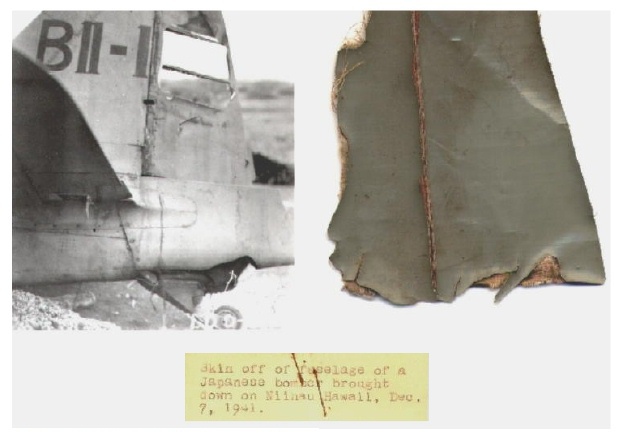
Another fragment of a Zero recovered ca December 1941/January 1942, known as the "Aliamanu Crater Zero Relic," was souvenired by Robert Keith LEVENTON. A written account by LEVENTON, dated 25 October 2000, contained information which corrected the previous assumption that the "Aliamanu Crater Relic" had been recovered from the IIDA Zero that had crashed at KANEOHE Bay NAS. It now appears that this small relic (shown below) may have been a piece of the NI'IHAU Zero tail.
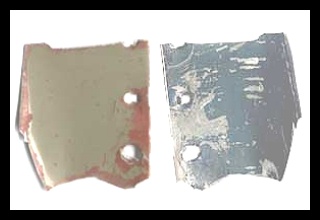
On 27 March, 2000, Keith LEVENTON wrote:
" ... circumstances of my employment put me in a position on December 7,
1941 to see the first bomb dropped on Pearl Harbor just as it was released
from the lead dive bomber of the Japanese attack. This bomb landed on
or near the seaplane ramp on Ford Island. That this was the first bomb is
confirmed by the noted historian Samuel Eliot Morison in Volume III of
History of United States Naval Operations In World War II, 'The Rising
Sun In The Pacific'.
In the days following the attack the personnel and equipment of Contractors
Pacific Naval Airbases, by whom I was employed, were sometimes made available
to assist our armed services in repairing damage inflicted by the attackers.
For example, we sent many truckloads of roadbase material over to Hickam
Field to fill bomb craters in the airfield runways.
One such trip took me to Aliamanu Crater where much damaged superstructure
which had been removed from ships in the harbor was being stored.. Amid
these piles of twisted and scorched steel was the wreckage of one of
the Japanese planes which had been shot down or otherwise crashed on
December 7th. Wishing to have a souvenier from such a momentous
event, I picked up a couple of small pieces of aluminun sheet metal which
had been part of the aircraft and stuck them in my pocket. I have had
them ever since, and one of the pieces is clipped to this letter [as
shown above]."*
*s/Robert Keith Leventon, San Jose, California
In a follow-up note, dated 25 October 2000, LEVENTON added:
"I feel that you should rule out the Kaneohe aircraft [IIDA Zero crash
remains] because the time I was at the Aliamanu Crater dump was too close,
timewise, to 12/7/41. I don't believe the Navy would have tied up a truck
to haul the wreckage over from Kaneohe at that time."*
*s/K. Leventon
In addition to the IIDA Zero remains, retained at KANEOHE Bay NAS, the
only other Zero wreckage assessed by U.S. Navy intelligence personnel
was the NI'IHAU Zero wreckage. A military intelligence report filed by
U.S. Navy Lt. C.B. BALDWIN, Branch Intelligence Office, PORT ALLEN, KAUA'I,
listed the recovery of materiel from the "Japanese airplane wreckage
on Niihau." Included in the list of equipment removed was a part, or
parts, of the empennage and the Zero's arrester hook. These items
were flown from BURNS A/F on KAUA'I to OAHU, perhaps to FORD Island. In
the event, the arrester hook was of obvious value to the U.S. Navy, but
the rest of the metal may not have been and subsequently disposed of
with the ship wreckage hauled to the Aliamanu Crater dump.
While this evidence is circumstantial, it now appears that the "Aliamanu
Crater Relics" are more likely to have come from the NI'IHAU Zero than
the IIDA Zero at KANEOHE Bay NAS or the HIRANO Zero remains stored in
a hanger for evaluation.
Jim Lansdale
[Part 1] [Part
2] [Part 3] [Part
4] [Part 5] [Part
6] [Part 7]
Credit: National Museum of the USAF, Pacific Aviation Museum, AAHS, Pearl Harbor Attacked Message Board, R. Keith Leventon/Leventon Family Collection, G-2 Report Fourteenth Naval District, and LRA